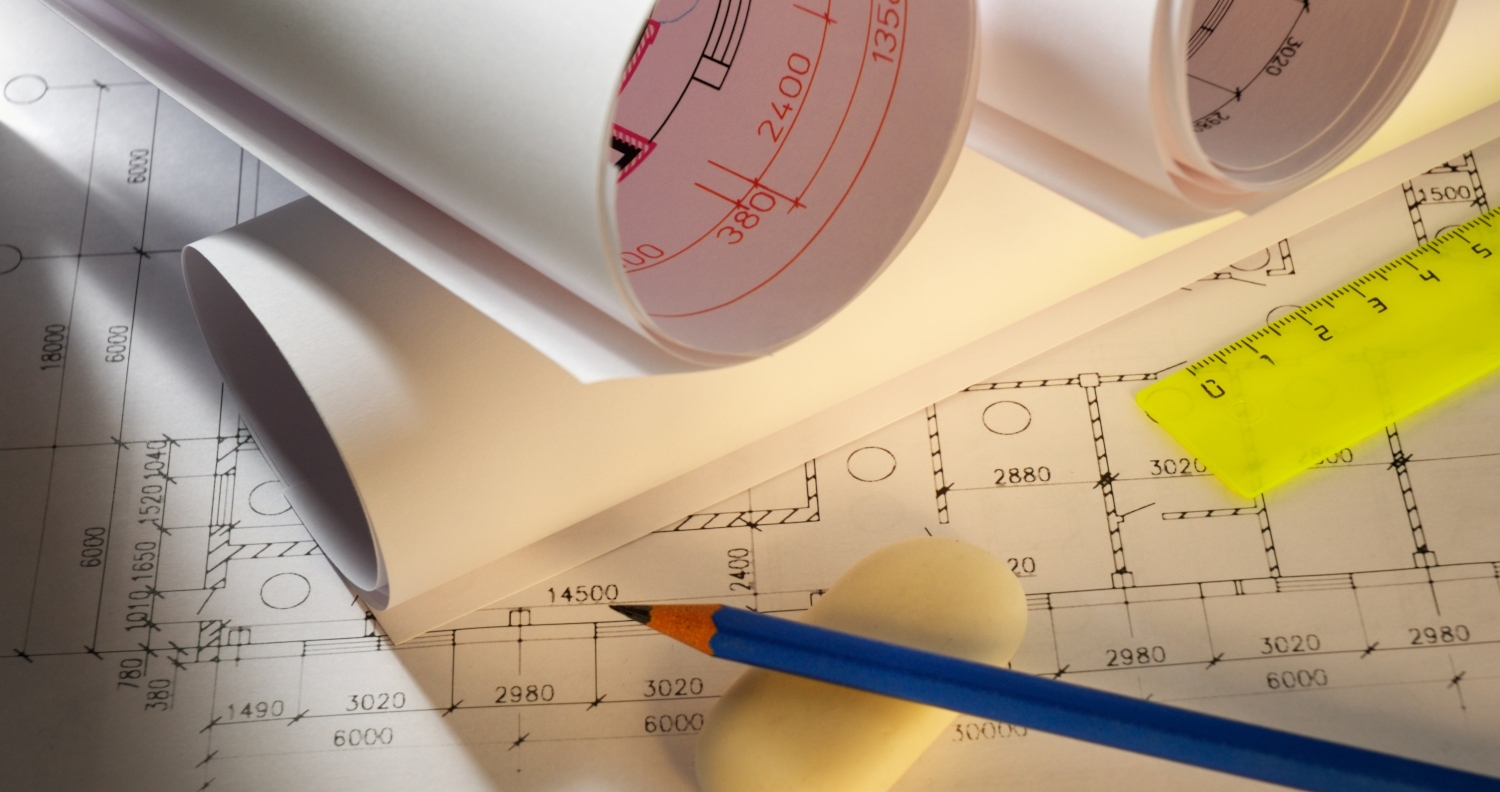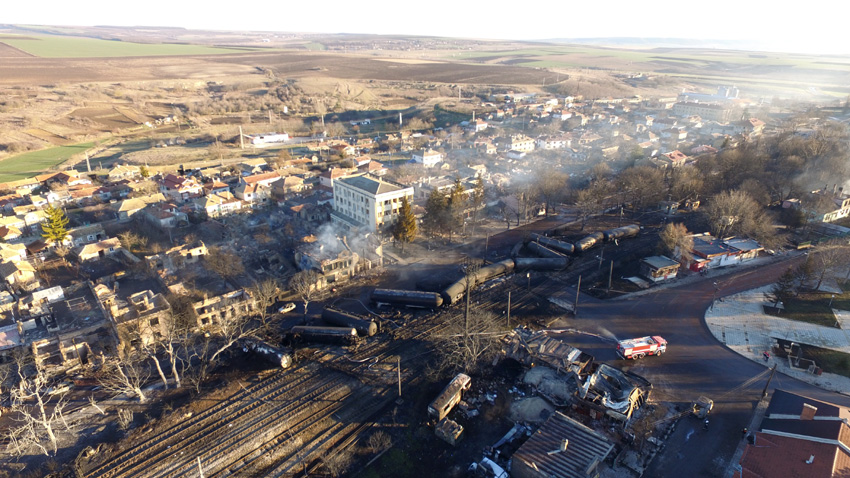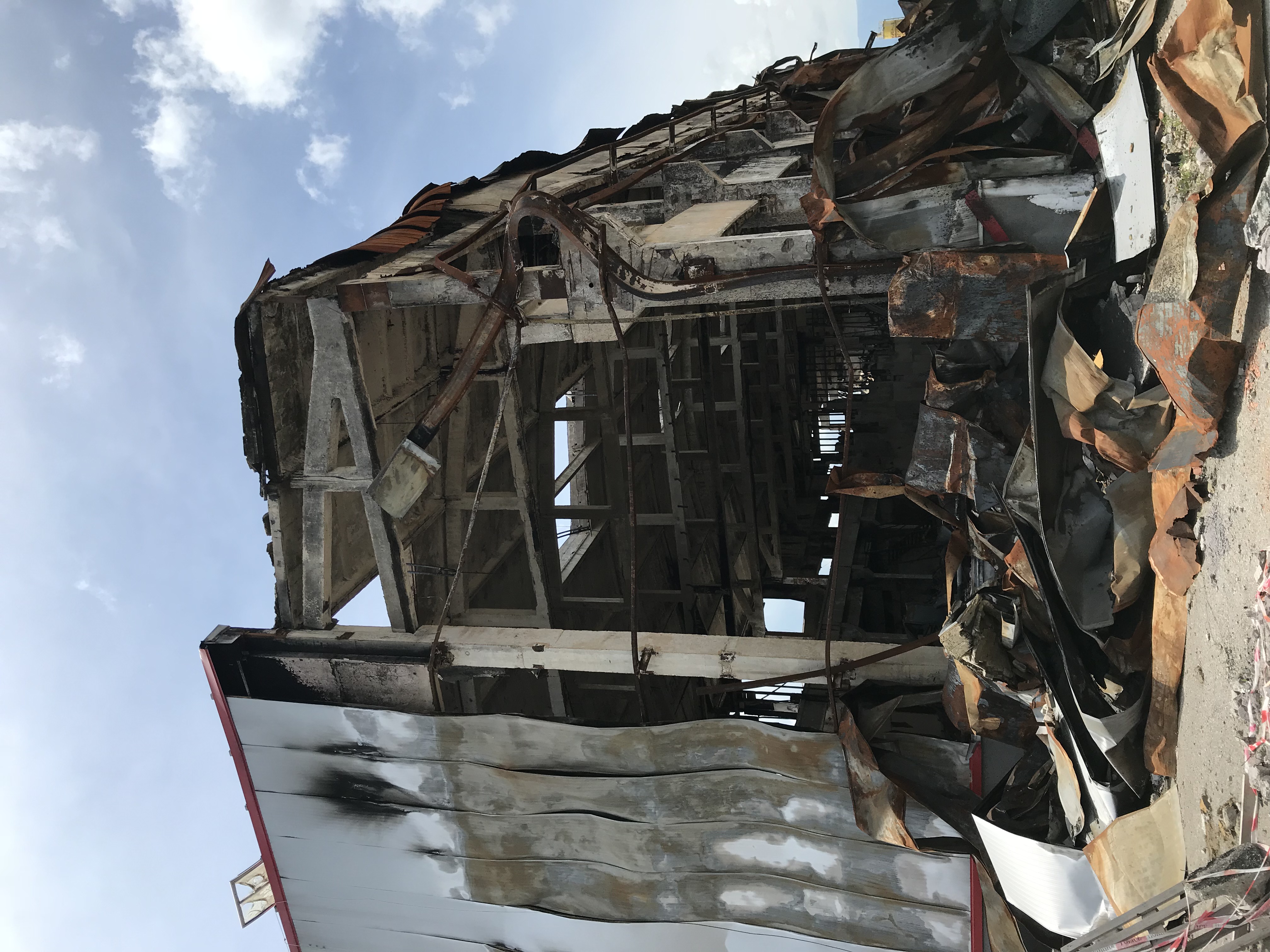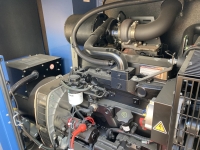Now imagine your datacenter is located nearby. For years it may have been operated with no issues until the disaster happened.
Therefore, when selecting location we avoid close proximity to airports, railways, highways, industrial plants, nuclear power plants, chemical plants, oil refinery and other. Due to the same logic military polygons, weapon storages and other places, where explosion and/or fire may occur must be avoided.
We also avoid locations, where natural disaster may happen. Forest fire or risk of flooding from big rivers or in close proximity of dams, earth slides, locations with extreme temperature deviations or heavy rain/snow. No need to mention volcanic eruptions, risk of avalanches, hurricanes, tornadoes, tsunamis, storms, blizzards etc. Earthquake zones provide substantial risk for building structure operational readiness of the datacenter. As it is not possible to completely exclude the earthquake zones, when planning it is a must to request earthquake resistant construction design. All our datacenter buildings are designed to withstand 9th degree on Richter magnitude scale
It is important to mention that many of natural disasters my occur not only in rural but also in populated areas.
In dense populated areas you must avoid locations, where many people may get together. By default these are stadiums and sport halls, big public transport hubs, office and/or university campuses etc. There is also one group of locations which has to be avoided at any cost-places where it is likely to have riots or escalations. These are prisons, immigration camps and other.
A thorough analysis must be conducted on the risk of flooding. That includes identification and assessment of all rivers, water ways and dams. This process includes not only those in close proximity of the site but also distant one, which depending on the landscape may generate big water flow in case of emergency, maintenance or heavy rain.
Last, but not least, datacenter location must provide easy access of telecommunication networks or Internet Exchange Points. Even the best location, seen from disaster prespective, will be useful if there is no easy way to connect it to telecommunication infrastructure and more – to be able to achieve divers network routing. We built one of our sites in a rural area, but in a close proximity of international fiber routes,, going from Europe to Turkey and Middle East.
Having many, diverse and high speed telecommunication routes makes towns like Frankfurt am Main in Germany such a popular place for colocation and datacenter facilities.
For middle size and big datacenter location must be consider in relation with power supply options. Especially when required power exceeds 5-6 MW and medium voltage supply is not sufficient, close proximity of high voltage grid infrastructure may reduce substantially initial costs and time to build.
As defined in most standards, the data center building must be located at certain distance from publicly accessible areas to meet given Tier. In that respect the right land size must be purchased to ensure you can place the building in a way that those distances, as stipulated in the standards, are met.
Again-once selected, the location can not be changed or changing it will require huge costs and downtime. It is important to mention that identifying the requirements is the easier part of the job. Making detailed assessment is not always easy and require detailed investigation of all aspects. Some of the possible treats are not obvious and they may stay dormant for years until disaster strikes. And than it is too late to react and mitigate the risks. Some risks were not identified, others are identified but not properly evaluated and may not be even included in DR and Business Continuity plans.
Now, once we have selected the location of our datacenter we need to design our datacenter building. We need to define and include in the assignment document building construction and premises layout.
Building construction
Selecting the construction type and technology is often delegated to the designer. It is my understanding that specifying it for datacenter/critical infrastructure projects must be specified in the assignment. Although it is very tempting to select technology, where speed of construction is high and construction costs are low, like steel construction with sandwich panels, I don’t think such technology is appropriate for building secure and durable datacenter building.
Yes, there are no “wet” processes, construction is fast and building cost is low, but steel constructions are very vulnerable to fires. The steel loses its carrying capabilities at few hundred degrees Celsius-temperature, which can be reached in a minutes in case of fire. In addition insulating panels have limited resistance to fire. Steel frames are less resistant to fire than wooden frame. Pictured below is a storage building, with reinforced concrete construction, but recently renovated with sandwich panels installed on outer walls and dry gypsum plasterboard inner walls. A fire occurred in the building and you can see on the picture what happened with steel elements and sandwich panels. Luckily, the concrete structure of the building didn’t lose its carrying capacity and although partially compromised by the fire, continue to bear the load and the building didn’t collapsed. That wouldn’t happen if the structure was made of steel, even with implemented techniques to protect steel from fire.
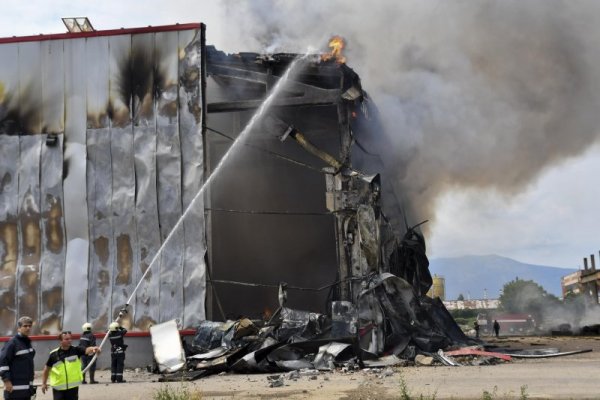
In my opinion the best construction technology is reinforced concrete frame with ceramic bricks masonry. This type of construction method uses reinforced concrete columns, concrete slabs and concrete beams to build the support structure. The walls are ceramic bricks masonry. During the structural design all load bearing capacity, including load generated by earthquake, is calculated to be carried by reinforced concrete frame. Masonry is not considered, but it gives and extra overall strength.
Another good option is pre-engineered reinforced concrete elements. Pre-engineered construction offers a quick way to put up a structure. The best thing about them is how quickly they go up because all parts are often ready to be bolted and screwed together.
Both methods provide excellent fire safety and fire resistance.
Details about floor layout you can read in our blog post about datacenter premises. Here I would like to mention that any underground premises should not be used for any critical datacenter systems.
Roof must be sloped. Sloped roof provides more structure and stability than a flat roof, as well as excellent drainage in areas that receive large amounts of rain. Ceramic or concrete roof tiles provide excellent rain water protection and long life. From other hand these tiles may crack easily when walking or working on the roof. Corrugated steel sheets or steel sheets with printed pattern which mimic standard tiles are good option. The steel has special protective paint which provides durability. They have less weight and will not crack if somebody is walking on the roof.
The best structure for sloped roof is reinforced concrete. Wooden frame structure is also acceptable but the wood must be treated with fire resistant paint.
Flat roof has higher risk for leakage and it is more difficult to fix insulation problems. Drains of flat roof can become clogged, leading to damage and leaks. It is recommended to avoid flat roof design for critical infrastructure buildings.


